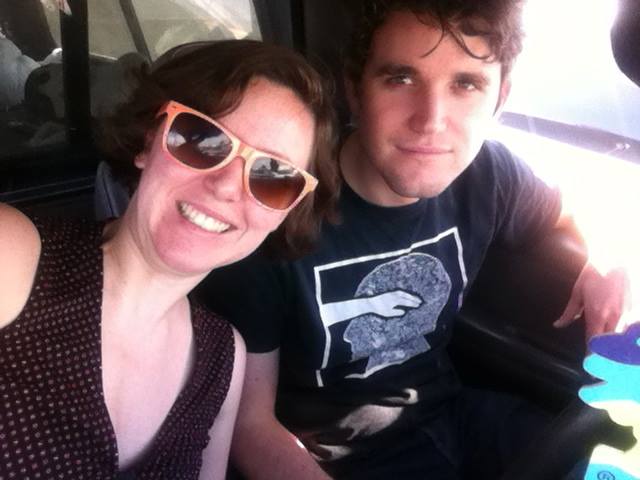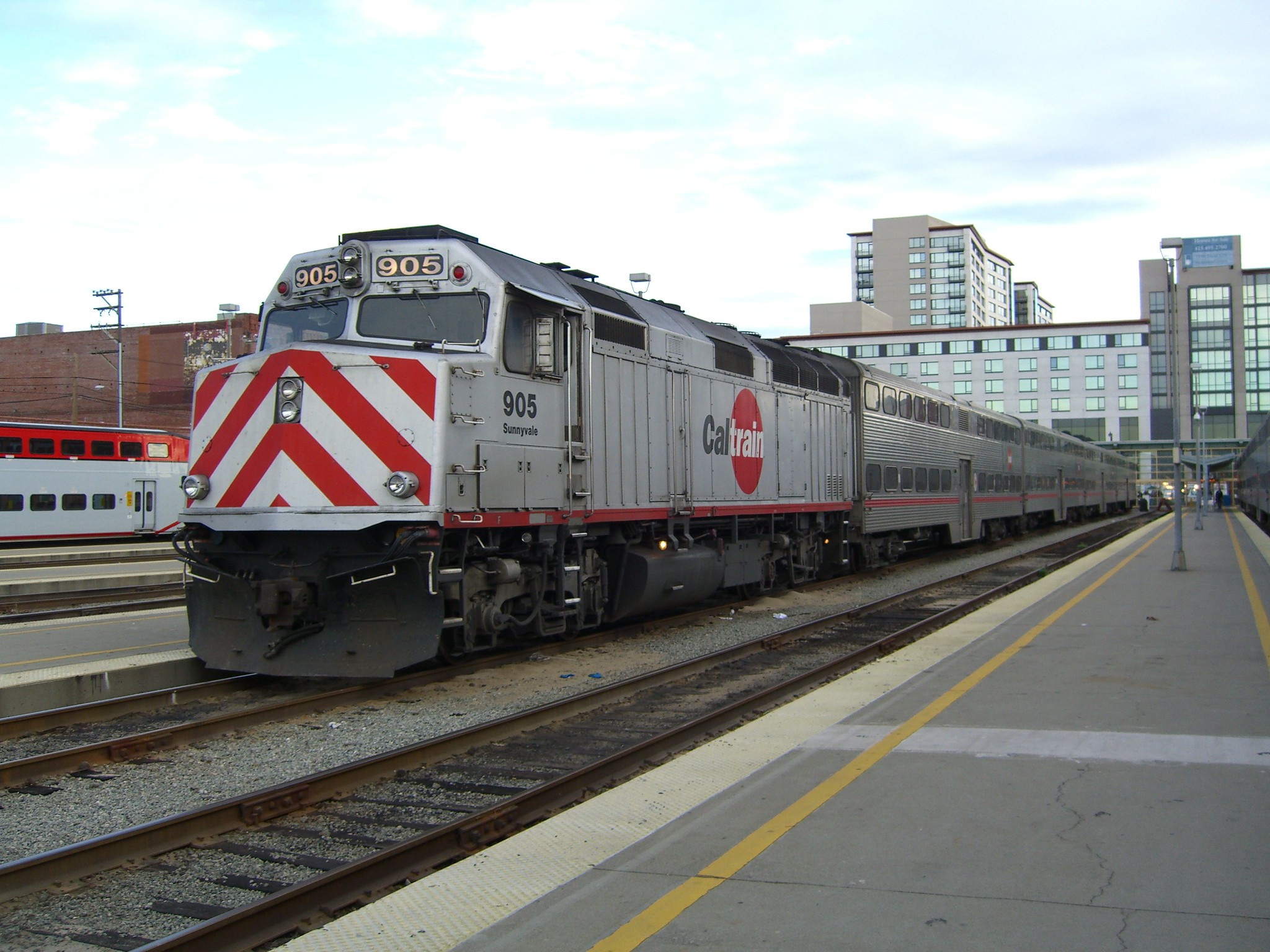About 40,000 Americans lost their lives in traffic crashes last year. Traffic violence is a public health crisis. But we rarely hear from the people who lose loved ones, who mostly suffer in silence. We invited readers to share their experiences of coping with devastating loss caused by traffic collisions. Kirsten Brewer responded with this essay.
In 2016 my brother Tom was biking home in Los Angeles. He took a street that I would learn is quiet for LA, but statistically deadly for bicyclists and pedestrians. At about 6 p.m. on this particular Saturday, a drunk driver in a box truck careened down a side street, hitting parked cars before killing my brother at an intersection. He was 26.
That first night after I got the call I was shocked and frightened. My brother was already dead, yet I was scared of what was to come. We had few details that first night, and my recollection is fuzzy. Trauma affects your memory.
We weren’t quite sure that it was a drunk driver. We didn’t know it was a truck. We didn’t know where exactly my brother was in LA.
It was late in the East and there was nothing I could do. I tried to sleep; I could not at first. The fear felt like I was on the edge of a tremendous pit. It was inevitable that I would fall into this pit. I worried that my brother had suffered. I worried that the crash had been gruesome. Most of all I feared what would follow when that pit of grief sucked me in. I had no idea what was to come for me or my family.
Over the following weeks I went through the rituals of unexpected death. I called friends and family to inform them; then I texted and emailed others because the conversation became unbearable.
I looked for any details, any scraps of acknowledgment from the world, about my brother’s existence and passing. It was not headline news in LA; I don’t think it made it into the LA Times or onto the evening news. My small, hometown newspaper back East did a cover story. They interviewed my dad and photographed him in his apartment in front of a wall of photos and my brother’s artwork.
As the news traveled and we hosted beachside services on the West Coast and East Coast, I realized the impact of my brother’s death was far-reaching.
Imagine my big pit of grief: It’s filled with water and it ripples outward from the crash and his death at the center. The impact ripples and is felt by me and my immediate family; then my extended family; his housemates and friends; his boss and coworkers; alumni of our high school.
Tragedy goes further than the first degree, too. I noticed how others were affected, like my friends and colleagues, or strangers who read his obituary and paused to consider the loss of a young person with his whole life ahead of him.
My brother worked on a TV show. A new season premiered not long after he died, and they placed a memory card at the end of the episode. Briefly, Twitter lit up with questions.
The effect of his death ripples far, and while the pain is of a different magnitude for his family at the center, it still reaches people distant from the immediate trauma. It is a tragedy for all of us when a human is suddenly killed in a crash.
One of the most startling experiences I had after my brother died was on our first night as a family in Los Angeles. We arrived in the evening that first day, and his housemates and neighbors greeted us, but gave us privacy as we entered his bedroom. I had a surreal feeling, a realization that it could have been me killed, with my brother alive and my family gathered in my bedroom soaking in my essence through my material possessions.
While my biking season is shorter in New England, but I very much enjoy road biking and exploring my town by bike. Nationwide, traffic deaths are rising, and bicyclist fatalities are no exception. Vermont, where I lived at the time of the crash, had just emerged from a 10-year period with one bicyclist fatality. Then, suddenly, in a state with less than one-fifth the population of LA, four bicyclists were killed in a year.
The ripples in the pool of water calm and I am staring at my reflection, aware of the great risks in my life, but also deeply grateful for life.
I've told you about my brother’s death and my experience through analogies and euphemisms: the pit of grief, the ripples, the reflection. I'm not doing this to flex my creative writing skills, to create melodrama, or draw attention to myself. We obscure our reality with language, because that pit of grief, that crater that is the loss of my brother, it often is too difficult to look at head on. That pit of water reflects a bright light, and you must blink and turn away from it. That's why we use euphemisms like accident, passed over, or loss. I rarely say out loud, "My brother is dead."
I think the devastation is so profound and shocking, and the potential closeness -- that reflection of yourself or your own family -- prevents us from looking at our traffic safety crisis with clear eyes. We look for an easy explanation that separates us, the living, from the dead: He wasn’t wearing a helmet; he was jaywalking; it was at night; he’s different than me. Not many of us challenge the status quo or interrogate our own habits. And so, the carnage continues on our streets. It’s easier to quietly acknowledge an “accident” and move on with our routine.
My late brother published a comic not long before his death. One of his characters says, “In the eyes of death people think they are judged. This is not the truth.” I work hard not to judge his death, not to judge my choices, or my family members’ feelings and expressions of grief. I try to suspend judgment of the whole tragedy, because no one can answer why this happened to my brother and my family; I could be lost forever trying to answer the “what ifs."
I do, however, judge the facts and the broader context of the loss imposed by traffic collisions. We made tremendous progress in the 1960s and 1970s reducing traffic fatalities and cutting drunk driving deaths. Policy changes, automobile safety features, and awareness building through advocacy have helped to save, many, many lives. But now that progress has petered out and started to reverse. Impaired drivers and speeding drivers are still killing us. There are new threats, like distracted driving. Meanwhile, cars are still designed to go very fast, development is sprawling and demands a car-centric lifestyle, bike infrastructure is an afterthought, bars are built in the middle of parking lots, and people protest against changes intended to save human lives.
It is frightening, but please try to look squarely at this crisis. Respect and be gentle with us, the surviving family members. We may be on the edge, or somewhere in the pit of grief. Please allow yourself to feel those ripples of impact, and let them move you to do something, anything to start saving lives.





